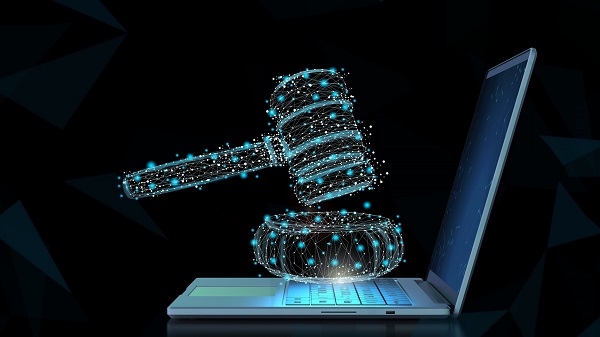


Federal Court Firmly Addresses Several Repeat TAR Disputes
- Cyber Breach
- 7 Mins
Technology assisted review (TAR) continues to revolutionize the way lawyers conduct litigation proceedings, especially as it becomes more economical and accepted as routine practice. TAR refers to advanced predictive coding solutions rooted in artificial intelligence which allows for litigators to streamline document review and improve the responsiveness of disclosures. This technology can quickly analyze massive data sets, yields results superior to manual review, helps weed out irrelevant data, and requires less personnel. While TAR commonly used in eDiscovery, courts are not consistent in how they view this practice, including whether a court can compel or prevent a party from using TAR, which party dictates eDiscovery methodologies, and cost-related disputes. Recently, in the case of Livingston v. City of Chicago, No. 16-cv-10156 (N.D. Ill. Sep 3, 2020), a federal court clarified several gray areas involving TAR usage.
Overview of Key Rulings
In the Livingston discrimination case, the plaintiffs claimed that the City of Chicago Fire Department treated women differently during their application process. Unsurprisingly, potentially relevant evidence included emails transmitted during the application process. The parties had a longstanding disagreement about how the defendant should conduct discovery on these emails. The defendant simply wanted to use Microsoft Tool to start the process, but plaintiffs pushed for the use of a vendor to run a more sophisticated search. The court ordered that the defendant needed to use a vendor for email collection and use the plaintiffs’ pre-determined search terms. However, the court left it up to the defendant to conclude what emails were responsive to plaintiffs’ requests.
After complying with the order and using the plaintiffs’ search terms, the defendant reduced the set down to 192,000 emails. The defendant wished to use TAR technology to sift through this data to help pinpoint what was relevant. Plaintiffs filed a motion to argue that under the original order, the defendant was restricted to using their search terms and needed to produce all relevant and non-privileged documents from that initial search. In the alternative, the plaintiffs maintained that they should be able to create a protocol for defendant to follow requiring TAR usage on the entire original data set. The court ruled in the defendant’s favor, and pointed out how the original order was not as strict as plaintiffs framed it but instead, left the responsiveness review entirely in the defendant’s hands.
Additionally, the court did not allow plaintiffs to dictate the TAR process. In making this decision, the court relied on Sedona Principle Six – which states that responding parties are best situated to evaluate the procedures, methodologies, and technologies appropriate for preserving and producing their own electronically stored information. The defendant only needed to use TAR on the reduced data set, as the cost and time associated with running it on the original email set would be unduly burdensome in the court’s opinion.
Another interesting TAR dispute the court touched on was whether this technology should have special treatment in relation to other, less sophisticated review methods. The court held that it should not, as every method yields some concerns over improper usage or failure to identify some relevant documents. In Livingston, the court noted the defendant’s willingness to use extra validation measures on data that TAR initially labeled as unresponsive provided an extra layer of review that should diminish any worries about responsiveness.
What Does This Mean Going Forward?
While this case does not necessarily establish hard rules, it does highlight some basic principles that parties should implement into their eDiscovery practice. Keep in mind that this case would only apply to courts in the relevant circuit and other courts may carve out exceptions. It will be interesting to see how courts in different circuits treat these issues and if any TAR disputes make it up to the Supreme Court. For litigations, the Livingston case should instill the following important points:
- It’s best to not ask the court to dictate how another party conducts discovery reviews. A key takeaway from this case is that the party bearing the costs for TAR should be the one developing protocols. This should stop future parties from opening the floodgates on attempting to dictate another party’s methodologies, which violates Sedona Principle Six. There is substantial conflicting case law on whether parties need to discuss TAR protocols beforehand. Livingston firmly states that this is not necessary.
However, this does not foreclose courts from intervening or taking an opposing party’s suggestions under advisement. One example could be if the party requests TAR after other search methods reasonably narrowed down a data set to include documents responsive to discovery requests. If adding TAR would only further delay proceedings and drive up the costs while not significantly affecting discovery disclosures, a court may decide this is unnecessary and intervene. Additionally, the Livingston court added emphasis on the fact that the defendant would use validation measures to basically double-check TAR’s results. Some future courts could decide to intervene and require that a party take this extra step based on the judge’s comments in the Livingston case.
- Pre-culling data sets before using advanced technology like TAR to perform a responsiveness review is an accepted practice that can significantly cut down discovery costs while still maintaining the integrity of the responsive data set. While this should please many litigators, keep in mind that the effectiveness of pre-culling will depend on the type of search terms used. Without relevant and specific keywords, this tool will not be as effective and could waste time.
- Litigators should not look at TAR any differently than other review methods, like keyword searching or manual review. Parties cannot put extra emphasis on challenging how a TAR review team trains the program, as there is always room for error in any method used. It will also be interesting to see how this principle holds up against future challenges that were not discussed in this case since many people believe that TAR should be treated as special due to the advanced technology and the ability to drive up costs or delay proceedings if used in situations where it is unnecessary.
Going forward, attorneys looking to employ TAR and cut discovery costs should be able to use this case to their advantage when developing protocols. There should be less disputes over these issues, which will overall streamline the discovery process in several cases. It is likely that other courts across the country will follow suit and start squashing disputes over general TAR issues, especially since this technology is becoming more commonplace in eDiscovery practice.
To learn more about how TAR can help your organization cut discovery costs, see Epiq’s recent whitepaper here.
The contents of this article are intended to convey general information only and not to provide legal advice or opinions.